How to Find Reusable Packing Supplies?
June 3, 2024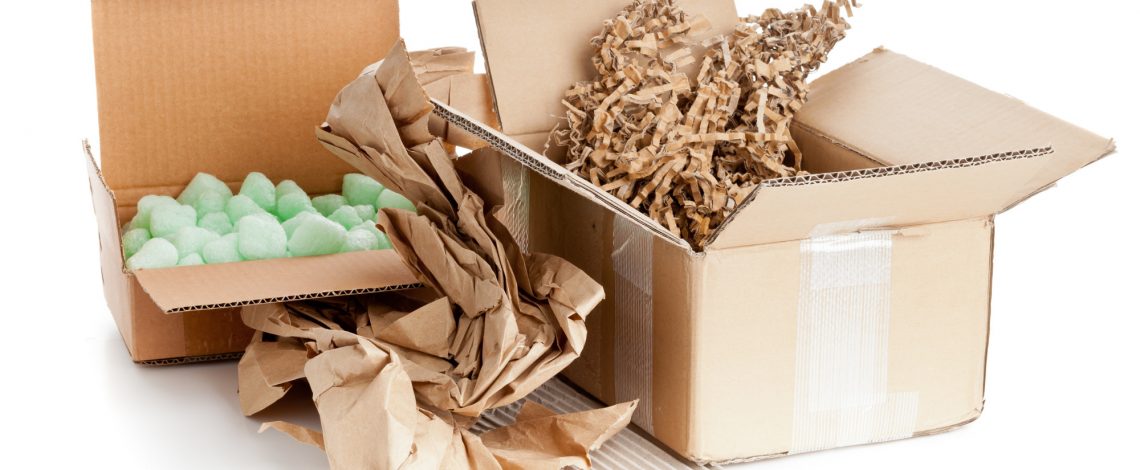
Looking for reusable packing supplies or hire a moving company tis a big help. You can make a big difference by doing little things.
Every individual on this planet has the ability to make a small difference that will have a significant impact on our world. You need a lot of supplies while you’re going out. The majority of the time, half of them would be squandered. In this way, you are only benefiting yourself and polluting the Earth to meet your needs.
We can change as well because the environment is changing. Every product and supply these days is made from environmentally friendly materials. Boxes and other moving supplies are included as well.
Also, Read: Guide in Packing Without Bubble Wrap
There are several moving companies to choose from. Some are superior to others, and you can never be certain which one to choose. As a result, it’s important to do this when you’re at ease and haven’t made any other decisions. When you’re depressed or under duress, don’t make decisions. Don’t make a hasty decision. It is a lengthy procedure, and you can take as much time as you need. Make sure you’ve spoken to your family about your plans. It is important that you all agree on something.
Here’s a tip to keep in mind when you’re compiling your list of moving companies. Find out can moving company is environmentally friendly by contacting movers. Look for a business that uses recycled packaging materials. As previously stated, climate change has become a major issue. It will be a challenge for our children tomorrow. That is why we must think about it right now.
Many moving companies these days are aware of the issue and are attempting to adjust to it. You can, too, by employing the services of a reputable moving company. Keep in mind that using recyclable supplies would allow you to save a significant amount of money for your move.
Take a look around you. Eco-friendly goods and materials can be found almost everywhere. And when it comes to packing and moving. There are certain items that any home has, but you might not have realized they are reusable. You can also choose from a few different packing choices.
To begin your quest for reusable packing supplies, look around your house. You already have a few things:
Furthermore, you have the option of purchasing a few items on your own. Check out what kinds of moving supplies companies have to sell. If you’re not happy, you can always purchase:
Also Read: What Are Best Packaging Fillers?
If you don’t already have cotton bags, you’ll need to purchase some. They will be useful not only when you move, but also in the future. Particularly for grocery shopping. And one thing is certain: you can make packing fun for the entire family by using recycled and DIY materials.
Now it’s time to ask the big question. What are you going to do with those recycled boxes you purchased? There are a few choices available to you, so you can choose the one that best fits your needs.
There is also a workaround if you are still undecided on whether you should get them or not. You can use suitcases, garbage bags, vacuum bags, or any other kind of bag you own, as well as baskets and hampers. It is up to you to make the right decision and set a positive example for future generations.
You’re probably just thinking about one thing right now. Is it more economical to buy eco-friendly packaging materials and where will you find them? If your moving company does not use recycled materials and is unable to provide you with what you need, you have two choices.
The first choice is most likely the one that takes the most time. Take a walk around your neighborhood and see what you can find. Go to various shops, conduct testing, and find what you’re looking for.
Also Read: Tips for Long-Distance Moving with Kids
The second choice is unquestionably the quickest. That’s probably what you’re looking for, because moving can be frustrating and time-consuming, and you’d like to have as much free time as possible. If this is what you need, you must place an order for it online. On the internet, you have a variety of choices from which to choose. The best part is that they deliver it to your house.
For example, if you have friends who have recently relocated, you can always give them a call. Inquire if you can borrow the items you need. It’s also a cost-cutting strategy.
There are plenty of choices, and each one is perfectly acceptable.
We must learn to think beyond the cage. These climate changes are not easy for everyone. They are, without a doubt, dangerous to humans. Small actions can add up to a big result in the end. Many manufacturing sectors prioritize the climate and the future above all other considerations. More and more products are being manufactured from recyclable materials. Also for traveling, reusable packing supplies are easier to come by. So, if you want to make a shift, you should be certain that you can do it yourself or, at the very least, employ packing services to do the task for you.
Related Articles:
Whether you’re a biker, camper, kayaker, skier, or all-around outdoor lover, space-hogging gear can easily obstruct an otherwise well-organized environment. What is the solution? Extra storage in an indoor facility can help you declutter your home or garage. In this article, we’ll go over the different types of outdoor gear that could benefit from more storage, as well as some of the advantages of using an inside unit.
Outdoor gear that can benefit from interior storage facilities are as follows:
Extra storage can help if your outdoor gear is clogging up your life. Some examples of equipment that can benefit from indoor storage facilities include:
Why do you need an indoor storage container for your outdoor gear? Continue reading to learn more.
For a variety of reasons, storage containers are especially handy for outdoor gear, including:
Outdoor equipment can be costly. Indoor storage facilities are intended to secure your investment from theft and harm when you need to keep camping, sporting, or other outside equipment. Gate access control, sensor-driven lighting in the hallways, high-tech video monitoring, and alerted doors are some of the things to look for. Additional security elements for new tenants, such as our six-point identification system, can provide even more peace of mind.
Indoor storage units must be pricey with so many appealing features, right? That is not the case. Look for reasonable month-to-month rentals with flexible payment choices, such as monthly automatic payments, when you need extra storage for your outdoor gear.
Indoor storage facilities, such as ours, are light and airy, in contrast to the gloomy and dingy storage units of the past. In addition to the aesthetic, you’ll find gentle ambient music and complimentary coffee in the workplace, all of which are designed to create an environment we hope you’ll refer to as your happy place.
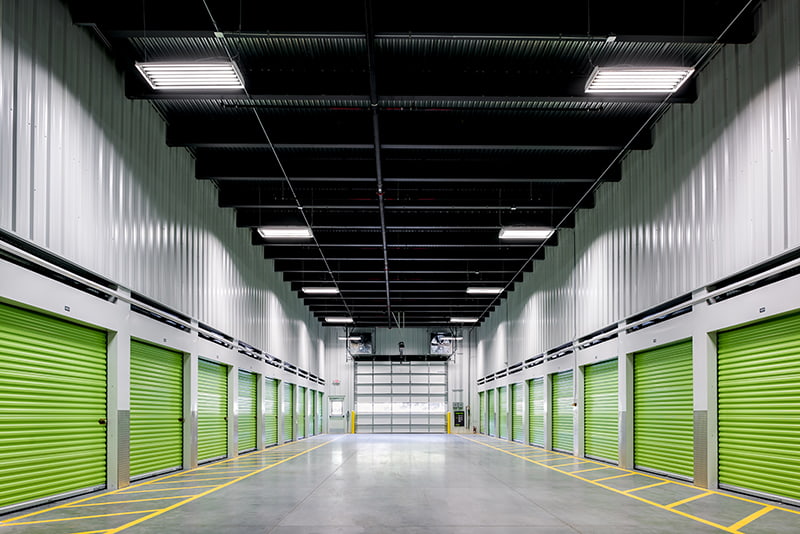
Indoor storage facilities, such as ours, provide various loading spaces for convenient drop-off and pick-up, allowing you to pop in and get on with your journey – quickly. Some storage spaces even include drive-up access, combining the convenience of outdoor extra storage with the comfort and security of an interior facility.
Outdoor equipment is designed to get dirty – but not in your storage container! Indoor storage facilities, such as ours, are spotless, allowing you to save the grit for your outdoor pursuits.
Do you intend to keep a canoe, kayak, or other large outdoor gear in your storage unit? Indoor storage facilities with expanded ceiling heights are available to fit all of your belongings.
We’re here to help you indulge your outdoor pastimes – without restricting your style – with modern and conveniently situated indoor storage units. We’re committed to changing the concept of self-storage in a variety of ways, including security, cleanliness, and price.
Related Articles:

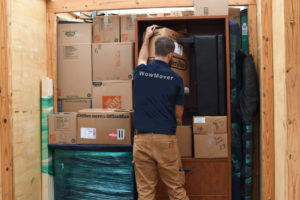


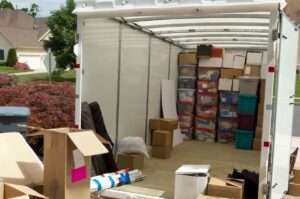

Portable On Demand Storage commonly known as a PODS container, a moving and storage container service that allows you to pack your items into rented storage or PODS container. They have pioneered the storage and moving containers system. If you are a budget-conscious, PODS is a great option for you. Some long-distance move costs a bit more but this always depends on areas.
PODS makes moving and storage more affordable and easy to schedule for business, local, military, or government relocation. Whether these storage placed at PODS container facility, relocation site, or at your home, the company will take care of safely in place.
Learn More: Updated: Learn More About Pods Moving Cost, FAQs, and Tips!
PODS specialty is residential relocation, business, long-distance, local moving, government, and even military relocations. PODS containers are available around the world and it is available in the United States. PODS lives by its name, you need to book far in advance because they are in demand and containers rent quickly. If you are planning to park your container somewhere in your cities, you need to check your local regulation to confirm it is legal.
Need Truck for moving?
The Best Moving Companies That Provides Trailer Rental
Portable On Demands has two options for insurance, Content insurance, and container-only insurance. Content insurance means you are covered both the belonging packed inside and for the container. While Container-only insurance covers any damage to the storage while it’s on your property or where its located.
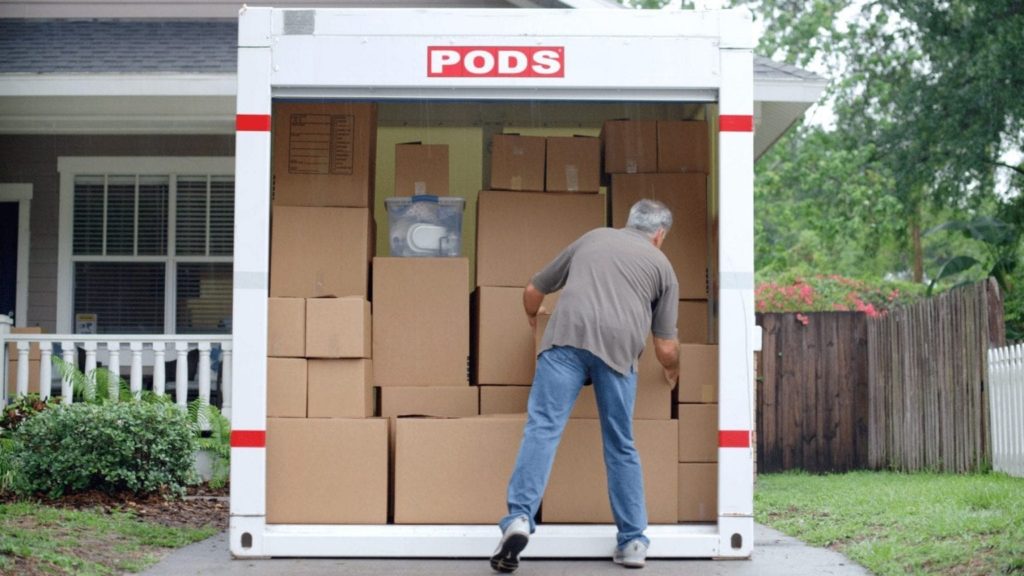
PODS also offers moving supplies such as moving blankets, locks, cushioning materials, tapes, and dispensers, packing supplies, rubber moving band, lifting straps, and more.
If you are looking for affordable ways to move, PODS Container might worth it for you. PODS also offers 30-day rental which gives you more time to pack your belongings and it is useful for your long-distance relocation.
You may need to renting a storage unit for a variety of reasons. There are solutions for you whether you need a temporary storage solution while renovating or a longer-term solution after downsizing your house.
We can assist you if this is your first time renting a storage unit. We’ve compiled some useful information to assist you in selecting the best option for you.
When looking for a storage unit, it’s ideal to start by figuring out what kind of storage you require. There are two kinds of storage units to choose from:
Aslo Read: Guide on Maximizing Your Storage Unit
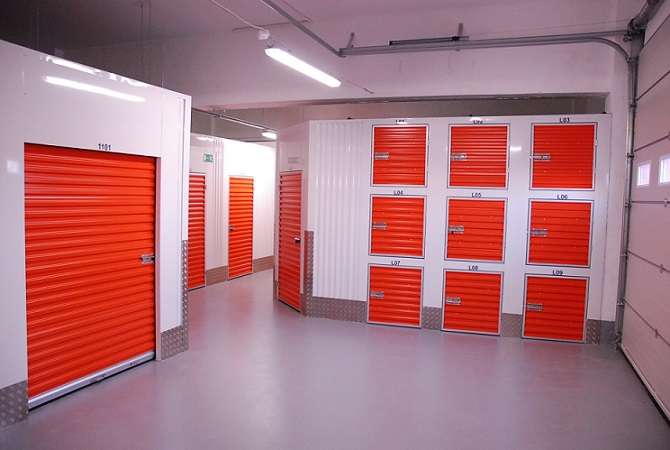
The majority of folks end up opting for self-storage. These units are usually less expensive and easier to obtain. Whatever type of storage company you choose, there are a few things to consider while making your decision.
Take into account how frequently you’ll need to access your belongings. If you know you’ll need to access the unit on a regular basis (or even more frequently), pick one that’s easy to get to. Find a location that is accessible without having to fight with traffic or bus changes, whether you utilize public transportation or drive yourself. Inquire about the accessibility hours when renting a storage unit. Some businesses have regular business hours, while others are open 24 hours a day, seven days a week. Choose the unit that best suits your requirements.
If you drive a car, your storage unit’s physical accessibility may be a consideration. Some businesses are designed such that units can be accessed from the outside and products may be easily transported from storage to a car. Others have indoor access via hallways, which means you’ll have to travel further to fetch or drop off something.
Depending on what you’re storing, a climate-controlled storage container may be necessary. Electronics, antiques, and artwork, for example, would benefit from a steady temperature.
Most companies provide a variety of storage unit sizes, allowing you to select the one that best suits your needs. Of course, you should begin by determining how much material you will need to store in the unit.
Often, after your items are in boxes, you’ll discover that they take up less space than you anticipated. You’ll obtain a clear picture of what you have and how much storage space you’ll need to maintain it by gathering and organizing your belongings.
It’s a good idea to leave some space around boxes and furniture for airflow if you’re storing for a long time. This will maintain your items in good condition while also making it easy to browse and find what you need when you need it.
Do yourself a favor and keep track of everything that goes into your storage unit while you pack. This will not only help you keep track of what you have, but it will also provide you with a list in case you need it for an insurance claim.
We also recommend drafting a simple map if you have a lot of boxes and items to keep. You don’t want to have to unpack your entire storage unit just to find that old photo book, so do yourself a favor and make some guidelines for where items should go.
Also Read: Moving Checklist : Necessities for Smooth MovingMoving Checklist 2021: Necessities for Smooth Moving
Wow Mover gives alternatives for short-term storage while you’re in transition or long-term storage to save the stuff you can’t fit in your house. You may feel certain that your valuables are in good hands with full-service facilities including climate control, photograph inventory, and high levels of security.
Related Articles:






Moving can be a daunting task, especially when it involves interstate relocation. The stress of packing, organizing, and transporting your belongings to a new location can feel overwhelming. This is where Safebound Moving and Storage steps in, your ultimate solution for seamless interstate moving and secure storage services. Let’s explore why Safebound is not just a moving company; it’s your partner in hassle-free relocations and reliable storage solutions.
Safebound Moving and Storage specializes in interstate moving and storage, ensuring a smooth transition from one state to another. With a dedicated team of professionals, they handle your belongings with care, ensuring they reach your new destination safe and sound. Whether you’re moving a few states away or across the country, Safebound offers efficient and reliable moving services tailored to your needs.
Need a secure place to store your items before, during, or after your move? Safebound Moving and Storage provides climate-controlled storage facilities, ensuring your valuables are protected from temperature fluctuations and humidity. Whether you’re storing sensitive documents, electronics, or furniture, their climate-controlled storage units guarantee optimal conditions for your belongings.
When it comes to choosing the best interstate moving and storage company, Safebound stands out among the competition. With a stellar reputation for reliability, professionalism, and exceptional customer service, Safebound has earned its place among the best interstate moving and storage companies in the industry.
Moving involves more than just transporting your belongings; it’s also about finding the right storage solutions. Safebound Moving and Storage offers a variety of storage options designed to cater to different needs. From short-term storage during your move to long-term storage for seasonal items, they have you covered.
Moving can be costly, but Safebound Moving and Storage believes in providing affordable solutions without compromising on quality. Their commitment to offering the best prices on moving and storage services ensures that you get exceptional service without breaking the bank.
Moving doesn’t have to be a stressful experience. With Safebound Moving and Storage by your side, you can enjoy a smooth and hassle-free relocation process. Their commitment to excellence, combined with their array of services, makes them the go-to choice for individuals and families embarking on interstate moves.
Safebound Moving and Storage goes the extra mile by providing a team of skilled professionals, including the ever-reliable “Two Men and a Truck.” This experienced team ensures that your belongings are handled with precision and care, making the moving process efficient and stress-free.
Moving and storage are pivotal aspects of any relocation journey. Safebound Moving and Storage understands the importance of these services in ensuring a seamless transition to your new home. Whether you need interstate moving assistance, secure storage solutions, or both, Safebound is your trusted partner every step of the way.
Ready to embark on your moving adventure? Partner with Safebound Moving and Storage and experience the difference. Your journey to a new beginning starts with us.
Visit wowmover.com to discover more about Safebound Moving and Storage and how we can transform your move into a stress-free and successful experience. Safebound Moving and Storage: where your peace of mind meets our professional expertise.
Decluttering your life can have a profound impact on your mental well-being and overall quality of life. We are constantly bombarded with distractions and responsibilities, finding ways to simplify our space is more important than ever. One effective solution to decluttering is utilizing self-storage facilities, which offer a convenient and flexible way to manage belongings.
Clutter not only occupies physical space but also weighs on our minds, leading to stress and anxiety. Decluttering is the process of simplifying our surroundings by removing unnecessary items and organizing our belongings.
Self-storage facilities provide individuals with a secure and accessible space to store belongings that are not needed on a day-to-day basis. Whether you’re downsizing, relocating, or simply seeking to free up space in your home, self-storage offers a practical solution.
A clutter-free environment promotes mental clarity and reduces stress. Studies have shown that a tidy space can lead to improved focus and productivity, as well as reduced feelings of overwhelm and anxiety.
By eliminating distractions and creating an organized environment, decluttering can help improve productivity and focus. With fewer items vying for our attention, we can concentrate better on the tasks at hand and accomplish more in less time.
One of the biggest challenges in decluttering is overcoming emotional attachment to belongings. We often hold onto items out of sentimentality or fear of letting go, even if they no longer serve a practical purpose in our lives.
Many people struggle to find the time and motivation to declutter their spaces, especially if they lead busy lives or lack organization skills. Without a clear plan and system in place, decluttering can feel overwhelming and daunting.
Self-storage facilities offer individuals the opportunity to store belongings that are not immediately needed, freeing up valuable space in their homes or workplaces. Whether it’s seasonal items, recreational equipment, or sentimental possessions, self-storage provides a secure and accessible solution.
Self-storage offers flexibility and convenience, allowing individuals to access their belongings whenever they need them. With extended access hours and various unit sizes available, self-storage facilities cater to a wide range of needs and preferences.
Before placing items in storage, take the time to sort through them and decide what to keep, donate, or discard. Organize belongings into categories and label boxes for easy identification.
Make the most of your self-storage space by utilizing vertical storage solutions, such as shelves and racks. Stack boxes neatly and use furniture that doubles as storage, such as ottomans with hidden compartments.
Choose a self-storage facility that is conveniently located and easily accessible from your home or workplace. Consider factors such as proximity to major highways, security checkpoints, and parking availability.
Look for self-storage facilities that offer robust security features, such as surveillance cameras, gated access, and individual unit alarms. Additionally, consider amenities such as climate control, 24-hour access, and on-site management.
Developing regular decluttering habits is essential for maintaining a clutter-free lifestyle. Set aside time each month to assess your belongings and identify items that can be donated, discarded, or stored.
Practice conscious consumption by being mindful of your purchasing habits and avoiding unnecessary acquisitions. Embrace minimalism by focusing on quality over quantity and surrounding yourself only with items that bring you joy and serve a purpose.
Explore real-life success stories of individuals who have experienced the transformative power of self-storage in simplifying their lives. From decluttering their homes to downsizing their belongings, these stories serve as inspiration for others seeking to streamline their spaces.
Decluttering your life is a transformative process that can lead to greater peace of mind, increased productivity, and a renewed sense of clarity. By utilizing self-storage as a solution, you can simplify your space and create a more organized and harmonious environment for living and working.
Moving to a new home can be an exciting but stressful time. As you prepare for the move, you may find you have more belongings than space at your new place. This often means you need to downsize your possessions. Some items you can donate, sell or throw away. But what about those things you want to keep, but just don’t have room for right now? This is where renting a storage unit can help.
During a move, you have a few options for getting your things into storage:
Ask the movers to make a stop at a storage facility
Rent a truck yourself and move items into storage
Hire a separate moving company just for transporting belongings to storage
This article provides tips on using a storage unit when you are moving, including how to work with movers to get your stuff into storage. We’ll discuss what movers will and won’t do when it comes to storage units, along with your other options. You’ll also learn what types of items are best suited for storage, and how to safely store your belongings. With the right information, using a storage unit during your move can be an easy and stress-free process.
Moving between homes often requires temporary storage solutions. Your old home may need to be emptied before your new home is ready. Or you may only be able to move a portion of belongings at a time due to logistics. Storage units provide a secure place to keep possessions in transition stages.
Renting a storage unit offers flexibility when relocating. You can move items gradually instead of all at once. This comes in handy if your new home won’t be ready on moving day or you need to downsize. Storage gives you time to sort through belongings and decide what to keep vs. donate or sell. Your movers may also lack the space to transport everything in one trip. Short-term storage bridges the gap between moves.
Storage units allow decluttering before a move too. You can free up living space by removing items you won’t immediately need at the new home. The storage facility safely stores them until you’re ready. This makes packing and loading on a moving day faster and easier. Your movers will appreciate transporting a smaller load as well. Using storage units strategically enables smoother moves.
Most professional moving companies are focused on transporting your belongings directly from your old home to your new home in an efficient manner. Their job is to load up all your possessions at your old house, drive to your new place, and then unload everything there.
Going to a storage facility to drop off items is usually outside the scope of their standard moving services. Movers aim to get your items to their final destination as quickly as possible. Stopping at a storage unit along the way would add substantial time and complications to the moving process that they are trying to avoid.
The moving crew likely has other scheduled jobs that day and wants to complete your move in the allotted time frame. They also have an incentive to maximize their productivity by completing as many jobs as possible. Adding extra stops reduces their efficiency and cuts into their profit margins.
For these reasons, most professional movers will not include storage stops as part of their basic interstate or long-distance moving packages. Their job is simply to move your stuff from one house directly to the other, not to handle intermediate storage. So unless explicitly arranged, you should not expect the movers to make a pit stop at a storage unit facility. Handle those logistics separately.
When using professional movers, you can request they make a stop at a storage unit to drop off some of your belongings. This gives you the convenience of having the movers transport items directly to storage as part of their existing route.
Most movers are willing to make a stop at a storage facility along the way if it doesn’t significantly increase the route distance. However, you’ll likely have to pay an additional fee for the added stop, which essentially acts as an extra destination. The fee amount will depend on the mover’s policies but expect to pay at least an extra hour of work.
If the storage unit is located far out of the way from the mover’s planned route between your old home and new home, they may decline the request or charge a higher fee. You may need to compare shops between movers to find one willing to accommodate your storage unit stop for a reasonable price.
When requesting a storage stop, discuss timing and fees upfront so there are no surprises on moving day. Clarify details like how long the movers will spend loading the storage unit and any requirements around providing access. With a bit of planning, having the movers handle storage can take out some of the work of moving yourself.
Many people try to save money by renting a truck and loading their storage unit on their own. This allows you to avoid paying movers to make an extra stop, which can add hours of labor and extra costs. However, it requires more physical effort and time on your part.
You’ll need to separately rent a truck, van, or trailer big enough to hold your storage items. Make sure to properly secure all furniture, boxes, and items so they don’t shift during transport. It’s a good idea to rent furniture pads, straps, blankets, etc. to prevent any damage.
Pack the truck strategically so you can efficiently unload at your storage facility. Back up the truck as close to your unit as possible. Have any necessary tools on hand like a dolly or hand truck to move heavy items. You may also want helpers to assist lifting furniture and boxes.
Take your time unloading and organizing your storage unit so you can easily access items later. Many facilities require you to provide your own lock, so make sure to secure your unit after unloading. Place any fragile items on shelves rather than the floor if possible.
This do-it-yourself approach requires physical exertion and time devoted to packing, driving, and unloading. But it allows you to transport items to storage at your own pace without paying for a moving company to do it. Just weigh whether time or money is more valuable as you determine logistics.
One option is to hire two separate companies – one for the main move and a second company that specializes in loading and transporting items specifically for self storage units.
The advantage of this approach is it gives you more flexibility. The moving company can focus on getting your furniture, boxes and other belongings from point A to point B efficiently. Meanwhile, the storage company is experienced in the best practices for loading units, securing items, and safely transporting goods to storage facilities.
However, hiring two companies can be more expensive overall compared to using just one moving company for the entire job. You’ll have to pay each company for their time and services. Evaluate if the added convenience and expertise is worth the additional cost.
Some key points if using two companies:
Research reputable local moving companies that offer dedicated storage unit transport. Look for companies that are licensed, insured, have good online reviews and affordable rates.
Give each company an accurate inventory of the items they will be handling. This helps them dispatch the proper vehicle size, equipment and number of movers needed.
Have the storage company arrive after the movers have loaded the main truck and departed. This avoids congestion and lets each crew focus on their respective duties.
Supply each company with directions, access instructions and the unit number for the storage facility. Confirm they have the proper access paperwork or locks/keys to get in.
Conduct a final walk-through of the storage unit after unloading to ensure no items have been misplaced or damaged.
Hiring two specialized companies takes coordination but can provide peace of mind knowing professionals are handling the storage aspect of your move.
When it comes time to move items into your storage unit, follow these tips to keep items safe and organized:
Take time to carefully inventory all items before packing them up. Having a detailed list of what is being stored can make retrieving items so much easier down the road. You don’t want to end up searching through dozens of boxes just to find one item. Create a numbered or lettered list corresponding to box contents and keep this inventory list somewhere handy outside the storage unit.
Invest in high-quality packing materials and storage containers. Use clean, sturdy boxes in good condition and bubble wrap or packing paper to cushion items. Label boxes clearly on all sides. For extra protection, place delicate items in plastic bins with lids or wardrobe moving boxes with a hanging rod. The extra expense of quality packing and storage materials is well worth it to prevent damage.
Load storage items strategically. Heavier boxes and bins should go on bottom shelves. Place rarely accessed items in the back and items you’ll need to get to more frequently in front near the door. You can also group similar items together in labeled areas to stay organized.
Pad and anchor furniture pieces and large appliances so they don’t shift around and rub against each other. Use furniture pads, moving blankets, or bubble wrap on corners and tie items down securely with moving straps.
Taking proper care to pack, label, and position items in your storage unit will allow for damage-free storage and easy access when needed.
When moving items into a storage unit, it’s important to consider what types of belongings you are storing and how best to protect them. This is especially true for valuables, antiques, and furniture.
Climate Control for Valuables
If you are storing items like artwork, musical instruments, antiques, or electronics, it’s highly recommended to use a climate-controlled storage unit. Temperature and humidity fluctuations can damage these types of valuables over time. Climate control helps maintain a consistent environment to prevent deterioration.
Leave Space for Furniture
Measure furniture and appliances you are putting into storage and map out where they will be positioned ahead of time. Leave adequate space to open doors and access items. Disassemble furniture when possible to maximize room. Place furniture up on blocks or pellets to protect from moisture. Cover with moving blankets or plastic to prevent dust buildup and scratching.
Properly preparing items for storage based on type will help keep them in good condition until you are ready to access them again after your move.
When you are selecting a storage facility during a move, it’s important to consider the security of your unit and your ability to access your belongings when needed.
Choose a reputable storage company that has secure facilities. Look for storage units with features like coded gate access, video surveillance, onsite managers, and individually alarmed units. Avoid facilities that seem rundown or have no security measures in place. You want to ensure your items are protected.
Also consider choosing a storage unit that will allow you to conveniently access your belongings when you need them. See how their gate hours align with your schedule. Many storage facilities allow 24/7 access with a gate code so you can retrieve items at any time. Some also allow online reservations for moving trucks to simplify accessing your unit. Make sure the facility’s access policies and features will accommodate your needs.
Selecting a storage unit with strong security features and access for when you need it will provide peace of mind about keeping your belongings safe and retrievable during your move. Do your research to find the right storage company for your needs.
Moving can be a stressful time, and deciding what to do with all of your belongings can be a challenge. Using a storage unit during a move is an option that many people consider. Storage units provide a secure place to keep your items, but they also come with extra costs and logistics to manage.
When using a storage unit with a move, you’ll need to consider if your movers can make a stop to load and unload items, or if you’ll need to transport items separately. Loading the unit yourself takes time and effort. Hiring separate movers just for the storage unit is another possibility, but adds expense. You’ll also need to factor in costs for the storage unit rental, and determine how long you’re likely to need it.
There are pros and cons to using storage units during moves. Key advantages include freeing up space in your new home, storing seasonal or infrequently used items, and providing security if you’ll be between homes. Downsides can include extra costs and time needed for transporting belongings. Evaluate your specific moving situation to decide if utilizing a storage unit is right for you. With planning, storage unit move can provide a helpful option when relocating.
Moving to a new place can be an exciting adventure, but the process of packing up your life and relocating can also be incredibly daunting. One of the most challenging aspects of moving is figuring out what to do with all the unwanted items you’ve accumulated over the years. Whether you’re moving across town or across the country, it’s essential to declutter your belongings and streamline your possessions. In this comprehensive guide, we’ll walk you through practical and eco-friendly ways to get rid of unwanted items when moving. By the end of this article, you’ll have a clear plan of action to make your move smoother and more organized.
Before diving into the specifics of how to get rid of unwanted items, let’s discuss why decluttering is crucial before a move. When you lighten your load, you reduce the volume of belongings you need to pack, saving time, effort, and money. Additionally, moving fewer items can lower your moving costs, especially if you’re hiring interstate moving services. Here are some benefits of decluttering before a move:
Decluttering allows you to assess your belongings objectively. Identify items you no longer use, need, or love. Streamlining your possessions ensures you only bring items that hold value and are essential to your new home.
Most moving companies calculate their fees based on the volume and weight of your belongings. By decluttering, you reduce the number of items to be moved, potentially leading to significant cost savings.
Moving can be stressful, and dealing with unnecessary items adds to the anxiety. Decluttering helps create a calm and organized environment, making the moving process smoother and less overwhelming.
Now that you understand the importance of decluttering let’s explore various methods to get rid of unwanted items responsibly.
Recycling is an eco-friendly way to dispose of items like electronics, paper, glass, and plastics. Many communities offer recycling services for residents. Contact your local recycling center to learn about the items they accept and their collection schedules. Remember to properly clean and prepare items for recycling to ensure they can be processed efficiently.
Donating items is a wonderful way to give back to the community while decluttering your home. Clothes, furniture, toys, and household items in good condition can find new homes through local charities, shelters, or thrift stores. Research charitable organizations in your area and schedule donation pickups or drop-offs.
For items that are no longer usable or recyclable, consider hiring junk removal services. These professionals can efficiently dispose of large and bulky items, saving you time and effort. Junk removal services responsibly dispose of items, ensuring they are properly recycled or sent to appropriate landfills.
Hosting a garage sale is an excellent way to declutter while making some extra cash. Gather items you no longer need, set reasonable prices, and advertise your sale in local online classifieds or community bulletin boards. Be sure to clearly label items and have enough change on hand. Whatever doesn’t sell can be donated or recycled.
Moving can be a transformative experience, and decluttering your home before the big day can make the process much more manageable. By following the tips outlined in this guide, you can responsibly and efficiently get rid of unwanted items, making your move smoother, more organized, and eco-friendly. Remember, recycling, donating, and using junk removal services are all viable options for disposing of items in an environmentally conscious way.
For professional interstate moving services, recycling guidance, or junk removal assistance, visit WowMover. Their experienced team can help you with all aspects of your move, ensuring a stress-free and environmentally friendly relocation experience.
By following these steps, you’ll not only simplify your move but also contribute to a more sustainable future by responsibly handling your unwanted items. Happy moving!
If you’re planning a move, decluttering your home, or just in need of extra space to store your belongings, the storage rental can be a practical solution. In the United States, the demand for storage units has been on the rise due to various reasons, such as moving, downsizing, or simply reorganizing your living space. In this article, we’ll discuss the important factors to consider when renting a storage unit, whether you’re moving, looking for extra storage space, or need a temporary solution.
Renting a storage unit has become increasingly popular for Americans for a variety of purposes. Whether you’re moving to a new home, renovating, or just need to clear some space, storage units offer a convenient and flexible solution. Here are some key aspects to keep in mind for your next storage rental.
One of the first decisions you’ll need to make when considering a storage rental is the type of storage that best suits your needs. In the United States, you’ll typically find two common options:
When renting a storage unit, location is a crucial factor to consider. If you’re moving, it’s essential to choose a storage facility that’s conveniently located near your current or future residence. This will make the process of moving your belongings to and from the storage unit much more manageable. If you’re using a portable storage container, check if the company offers delivery and pickup services in your area.
Your peace of mind is paramount when storing your valuable possessions. Make sure the storage facility or portable storage container you choose provides adequate security measures. Look for features like surveillance cameras, gated access, and well-lit premises. Additionally, consider investing in a sturdy lock for your storage unit for an extra layer of security.
If you’re planning to store sensitive items such as electronics, artwork, or documents, climate-controlled storage units are a wise choice. These units maintain a stable temperature and humidity level, protecting your belongings from extreme temperature fluctuations, humidity, and other environmental factors.
Storage units come in various sizes, so it’s essential to choose one that suits your needs. Consider making an inventory of the items you plan to store to help determine the appropriate size. It’s often better to opt for a slightly larger unit to accommodate unexpected items or provide room for easy access to your belongings.
Easy access to your storage unit can save you time and effort, especially if you need to retrieve items frequently. Some storage facilities offer 24/7 access, while others have specific operating hours. Consider your own schedule and choose a storage facility that aligns with your accessibility needs.
The cost of renting a storage unit can vary depending on factors such as location, size, and the duration of the rental. Be sure to read and understand the rental agreement, including the terms and conditions. Many storage facilities offer discounts or promotions for long-term rentals, so it’s worth inquiring about these options.
Protecting your belongings is essential, and many storage facilities offer insurance options to safeguard your items in case of unforeseen events like theft, fire, or damage. While it may be an additional cost, it provides valuable peace of mind.
Renting a storage unit is an excellent opportunity to declutter and organize your belongings. Take the time to sort through your items and decide what you truly need to store. Use this opportunity to simplify your life by getting rid of items you no longer use or need.
If you’re new to renting a storage unit, be sure to check out this comprehensive guide to renting a storage unit for first-timers . It covers the basics and offers valuable tips for a successful storage rental experience.
Portable storage containers, commonly known as “Pods,” have gained popularity in recent years for various reasons. These containers offer unique advantages that cater to the convenience of renters.
There are several reasons why Americans are increasingly turning to storage units when they need to move. Here are a few key considerations:
When you’re in the midst of a move, the last thing you want is added stress. Renting a storage unit allows you to pack and move your belongings gradually, reducing the chaos and pressure of moving day.
If you’re trying to sell your home, a decluttered and spacious living space can be a significant selling point. Storing excess items in a storage unit can help you present your home in the best possible light.
If you’re downsizing to a smaller residence, you may not have enough space for all your belongings. Renting a storage unit gives you the flexibility to keep the items you love without overcrowding your new home.
In some cases, you might find yourself in temporary housing before moving into your permanent residence. During this transition, a storage unit provides a secure place for your belongings until you’re ready to move them to your new home.
Many Americans use storage units to store seasonal items like holiday decorations, winter sports gear, or summer outdoor furniture during the off-season. This keeps their homes clutter-free and organized.
Deciding whether you truly need a storage unit when moving can be a complex decision. It depends on various factors, including the size of your new home, the number of items you need to store, and your overall moving strategy. Here are some key considerations to help you decide:
Evaluate the storage space in your new home. If you’re moving from a larger residence to a smaller one, you might not have enough space for all your belongings. In such cases, a storage unit can be a practical solution.
Renting a storage unit allows you to organize your moving process effectively. You can sort your belongings, pack them in an orderly manner, and move them to the storage unit at your own pace. This systematic approach reduces the stress of moving day.
If you’re in temporary housing before moving into your permanent home, a storage unit provides a secure and accessible space for your items. It prevents the need to transport your belongings multiple times, ensuring they remain safe until you’re ready to move them to your new residence.
For interstate moving, portable storage containers are particularly beneficial. These containers can be transported long distances, making them a convenient option for those moving across states.
When renting a storage unit, it’s essential to consider several factors to ensure a smooth and stress-free experience. Here are some key considerations:
Before signing any rental agreement, carefully read the terms and conditions. Pay attention to the rental period, payment schedule, late fees, and any restrictions or rules imposed by the storage facility.
Properly preparing your items for storage is crucial to prevent damage. Clean and dry your belongings before storing them. Disassemble furniture, use protective covers, and consider using pallets or boards to elevate items off the floor.
Labeling your boxes makes it easier to locate specific items when you need them. Create an inventory list and label boxes with detailed descriptions of their contents. This organization will save you time and effort in the long run.
While storage facilities take security measures, unexpected events can still occur. Consider purchasing insurance for your stored items. Some facilities offer insurance options, or you can explore third-party insurance providers.
Even if you’re not accessing your storage unit frequently, it’s a good practice to check on it periodically. Ensure that there are no signs of pests, leaks, or damage. Regular checks allow you to address any issues promptly.
Renting a storage unit, whether for moving, decluttering, or temporary storage, offers practical solutions for Americans facing various life transitions. By considering factors such as location, security, type of storage, and organization, you can make an informed decision that meets your specific needs. Remember to read contracts thoroughly, prepare your items carefully, and stay organized throughout the process.
For more detailed information on portable storage containers and their benefits, a first-timer’s guide to renting a storage unit, reasons why Americans are increasingly turning to moving storage solutions, and essential considerations when renting a storage unit, visit WowMover. Their expertise and insights will guide you through a seamless storage rental experience.
Relocating your business to another place can be stressful. Losing important data and files in the moving process can be the worst experience. From packing boxes to truck transitioning in your new location is a hard task. Hiring qualified and professional Commercial Moving Company is important to do the moving process. They have all the resources and experience to help you move your business and guarantee your seamless move.
Related: Top 5 Best Interstate Moving Companies
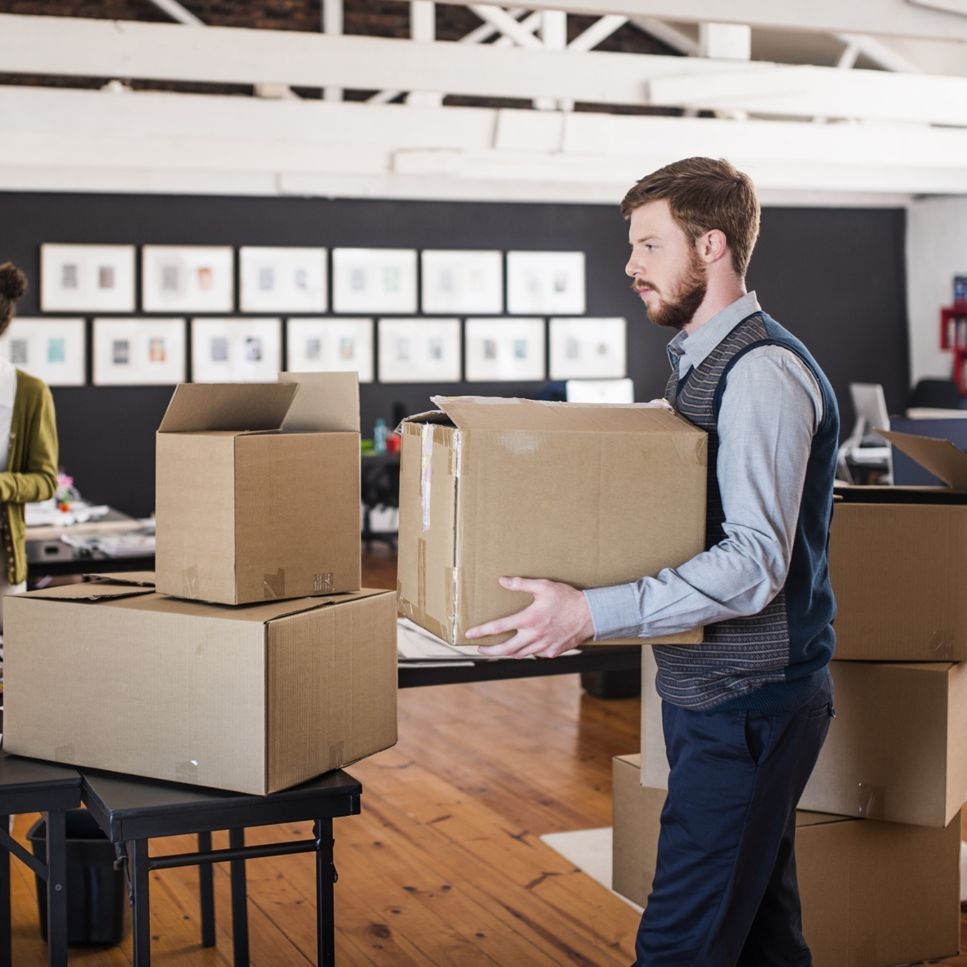
Hiring a professional Commercial Moving Company will save you money, time, and frustrations. Choosing the best corporate moving company will ensure to protect your most valuable assets. Here are the steps to consider when moving your business location.
1. Always Get a Quote
Call and get a quote as many as you can. Calling each Commercial Moving Company will let you know how capable they are. Interview each representative regarding their knowledge and commercial experience. Doing this should have a clear expectation of how professional mover and equipment operations. Do not close a contract without doing this step.
2. Reviews and Testimonials
Always pay attention to moving reviews. Read reviews online to know what others saying about the company. You can generally trust a moving company with a high volume of good reviews and testimonials.
3. Visit The Company
If you have time and you are decided on a corporate mover, take time to visit the moving company facilities. Investigate to make sure all details via phone about your move can be covered.
4. Credentials and Certificate
Ask them to provide proof of credentials, certification, or training when in your doubt. A professional moving crew should any credential before you sign a contract.
5. Financial Stability
Always look into their pertinent financial information when looking for corporate movers. Looking for a company financial stability is very important. If a company is having a hard time handling their assets, what more can you expect on your move?
6. Insurance
Moving your business to another place is entrusting your valuable assets to professional movers. When putting your belongings to someone else, always get a proof of insurance. This will ensure your livelihood covered in case of an emergency or accident.
RELATED POST